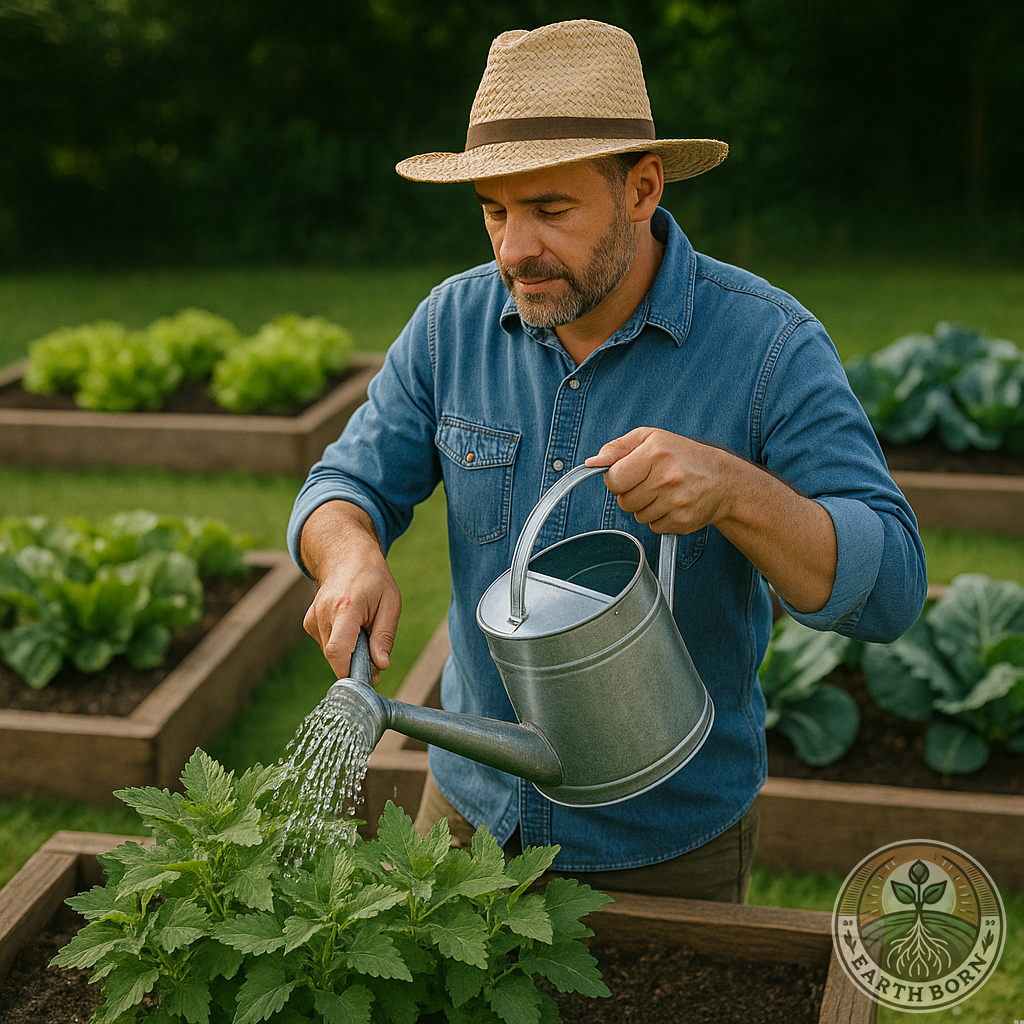
Welcome, fellow gardeners! Today, we’re exploring Lambsquarters (Chenopodium album)—a wonderfully versatile plant often overlooked in the modern garden. Known by many names such as Wild Spinach, Goosefoot, or Pigweed, this annual herb has been valued for centuries as both food and medicine. Originally widespread across Europe, Asia, and North America, it has naturalized worldwide, including South Africa, where it thrives in disturbed soils and gardens. Traditionally, it was a staple leafy green for Indigenous communities, prized for its spinach-like flavor and impressive nutrition.
💊 Medicinal Benefits
Lambsquarters is more than just an edible weed—it’s a powerhouse of natural wellness:
- Rich in vitamins A & C – boosts immunity and supports skin health.
- High in calcium, iron & magnesium – strengthens bones and promotes circulation.
- Digestive aid – traditionally used to ease constipation and stomach upsets.
- Anti-inflammatory properties – thanks to its natural compounds: saponins, flavonoids, and alkaloids.
📅 When to Plant in South Africa
🌱 Best planting time: Spring (September–November) once frost has passed.
🌱 Seeds germinate quickly in warm soil, typically within 7–14 days.
🌱 Harvest-ready within 6–8 weeks, making it a fast-growing leafy green.
🏡 Where to Plant
Plant Lambsquarters directly in your garden bed, veggie patch, or even along borders. It’s hardy, thrives in less-than-perfect soils, and self-seeds easily, making it an effortless addition to your food garden.
🌞 Soil, Water & Sunlight Requirements
✅ Soil – Prefers well-drained, fertile soil but tolerates poor soils.
✅ Sunlight – Full sun to partial shade.
✅ Water – Moderate watering; keep soil moist but never waterlogged.
✅ Fertilize – Not essential, but monthly feeding with compost or organic fertilizer will boost growth.
✅ Spacing – 15–30 cm apart to allow for bushy growth.
✅ Seeds germinate – 7–14 days in warm conditions.
✅ Transplanting – Can be transplanted once seedlings are 4–6 weeks old.
✅ Maturity height – 1–2 meters tall under the right conditions.
🍓 Flowers & Fruit
Tiny green clusters of flowers appear in summer, followed by nutritious black seeds—which are edible and can be cooked like quinoa.
🌼 Companion Plants
Lambsquarters is a great companion for tomatoes, peppers, corn, and lettuce. It attracts beneficial insects while helping shade the soil.
🐛 Common Pests
While resilient, watch for:
- Aphids 🐜
- Leaf miners 🍃
- Powdery mildew 🌫️
🧺 Harvesting
Pick young, tender leaves when plants are 15–20 cm tall. Harvest regularly to encourage new growth. Older leaves can become bitter, so focus on the fresh shoots.
🫙 Storage
- Store fresh leaves in the fridge for up to 5 days.
- Blanch and freeze leaves for longer storage.
- Seeds can be dried and stored in airtight containers.
🧪 How to Use as Medicine
- Leaf tea – Steep fresh leaves to relieve digestive issues.
- Poultice – Crushed leaves can be applied to soothe insect bites or minor skin irritations.
- Tonic food – Regularly eating the leaves provides vital minerals and vitamins that strengthen overall health.
(Disclaimer: Always consult a qualified healthcare professional before using herbal medicine, especially if pregnant, breastfeeding, or on chronic medication.)
🎉 Fun Fact
Lambsquarters was once considered a “poor man’s spinach” in Europe, but today it’s celebrated as a superfood. In fact, the seeds are closely related to quinoa!
⚠️ Caution
- Contains oxalates, so avoid excessive consumption if you suffer from kidney stones.
- Always cook mature leaves before eating to reduce oxalate levels.
📣 Call to Action
Lambsquarters is a hidden garden treasure—nutritious, medicinal, and easy to grow. Why not let this “wild spinach” thrive in your garden this season? 🌱✨
👉 Share your Lambsquarters growing tips with the #EarthBornGrower community!
#EarthBornGrower #GrowLambsquarters #WildSpinach #EdibleWeeds #GardenToTable


 **Meet Sprout!** Sprout is your friendly gardening companion at Earthborn, always ready with helpful advice on plant care, medicinal herbs, and natural gardening solutions. From seedling to harvest, Sprout provides expert guidance to nurture your garden and your well-being—making gardening easy, fun, and naturally rewarding.
**Meet Sprout!** Sprout is your friendly gardening companion at Earthborn, always ready with helpful advice on plant care, medicinal herbs, and natural gardening solutions. From seedling to harvest, Sprout provides expert guidance to nurture your garden and your well-being—making gardening easy, fun, and naturally rewarding.
